There are over 500 species of bees in the state of Oregon. Many help pollinate the unique crops that grow in Oregon. Honey bee colonies are large and long-lasting hives that can be moved to other crops and locations. Farmers can rent beehives from outside businesses or other farmers to ensure that their crops will be pollinated at a rate that will provide the appropriate yield of their crop.1
Honey bees were brought to America in the 1620s when European settlers came to the United States. In addition to their ability to pollinate crops and produce honey, settlers relied on honey bees as a source of wax and sugar. It wasn’t until modern agriculture in the 1930s displaced habitats of native pollinators with large farms that bees were moved around the country to pollinate crops.2
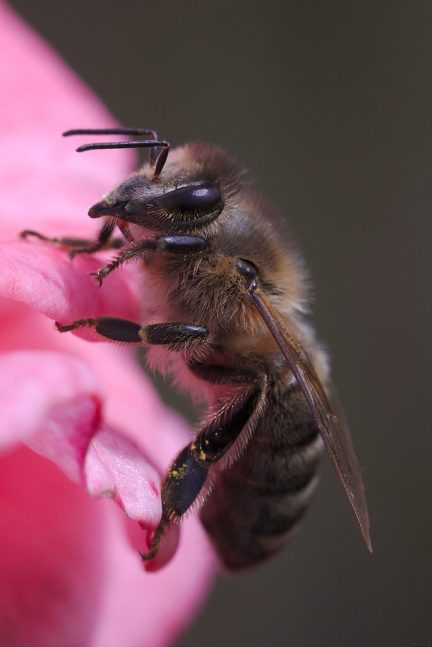
The Western Honey Bee is the most common honey bee. Like all honey bees, the western honey bee is eusocial, meaning that within a colony there is an organized division of labor and hierarchy. Each colony has a single fertile female, or “queen”, many non-reproductive females or “workers”, and a small number of fertile males or “drones.” The western honey bee was one of the first domesticated insects and is the primary species maintained by beekeepers to this day for both its honey production and pollination activities.3
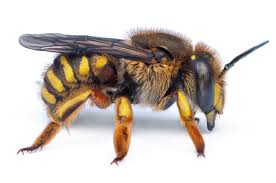
Wool carder bees are an exotic breed of bee found on the middle to the west coast of North America and Mexico. While most bees carry pollen on their hind legs, wool carder bees carry pollen on their abdomen. Instead of being hairy like other bees, wool carder bees are shiny and slick with a black base and yellow spots. Wool carder bees are known for being aggressive and territorial. Male wool carder bees will often defend a patch of particularly good-looking flowers to minimize their competition for mating with females. Wool carder bees are so aggressive that they will often bump into other bees or insects that are in their territory, even humans!4
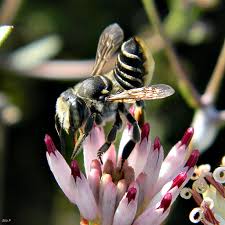
Pugnacious Leafcutter Bees can be easily noticed by their large mandibles. Mandibles are the two claw-like structures that are attached to a bee’s head, which are actually very useful jaws that protect the bee’s mouth and come in handy to chew, claw and scoop their way through things. Leafcutter bees also have yellow pollen-carrying hairs, called scopae, along the underbelly of their abdomens. Leafcutter bees have their name because they chew circles in the leaves of plants.5
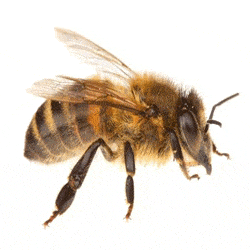
Worker bees hatch from a fertilized egg and are the female bees. After they hatch, they spend 6 days in the larva stage. In this stage, the bees are fed 150-800 times a day by adult worker bees to prepare for the pupa stage.
The pupa stage is the most important stage of a bee’s growth. This is when the wings, abdomen, internal organs and muscles form. After 20-21 days in the pupa stage, the bee chews through its hexagonal cell and begins to hunt for its first feeding.
Jobs of a worker bee includes feeding and cleaning larvae, cleaning hive cells, building comb, guarding the hive against predators, patrolling the work of other bees, taking pollen from forager bees, and storing, curing and packaging pollen. Worker bees live between 15-38 days in the summer. In the winter, healthy bees can often live for 140-320 days.6
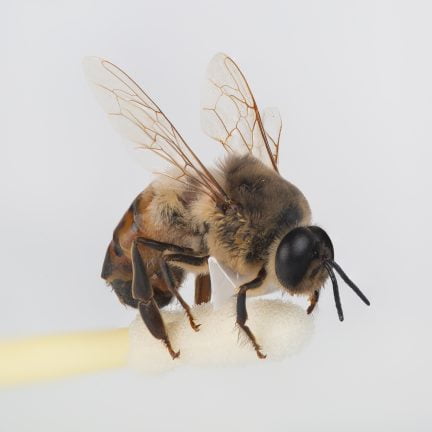
The beehive is made up of 15% drone bees. Drones are the only male bees in the hive. They hatch from unfertilized eggs. Their diet is similar to that of worker and queen bees except that drone bees’ diet has an increased amount of pollen and honey. The main purpose of drone bees is to mate with the queen bee. Drone bees leave the hive six days after emerging from their cell. Drone bees die shortly after they mate with the queen. The average lifespan of a drone bee is 8 weeks.
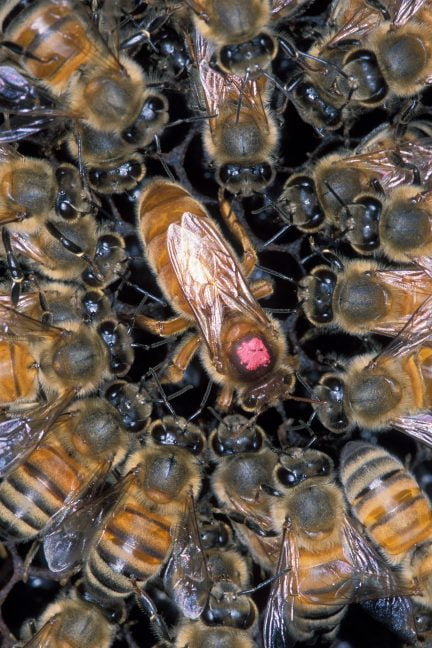
Queen bees are hatched from unfertilized eggs. The queen bee is fed an exclusive diet of royal jelly. Royal jelly is a milky jelly substance produced on the heads of the worker bees. This diet triggers the development of the queen. Once the queen bee is developed, her job is to mate with drone bees and lay eggs for the rest of her life. The average lifespan of a queen bee is normally 2-5 years. In that time period, she will lay around 200,000 eggs a year.7
Bee boxes are made up of vertically stacked wooden boards that the bees fill with honeycombs and fresh honey. When harvesting honey, the bee box is opened and the boards are removed. The honey bees are then relocated to another location in the box, or hive, while the honey is scraped from the boards to be processed. Honey is processed into jars or glasses for consumers to purchase. It’s important to remember to stay calm and move slowly around the bees and the bee box.
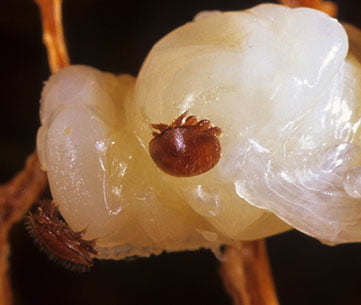
Varroa mites are parasites that take over a beehive and feed on adult bees, pupa, and larva. Varroa mites can kill individual bees and also attack the colony, causing an entire collapse.
One way to get rid of the varroa mites is to put the bees in a mason jar with powdered sugar. Shake the jar, and all of the mites will fall off the bees, ridding the bees of these harmful mites.8
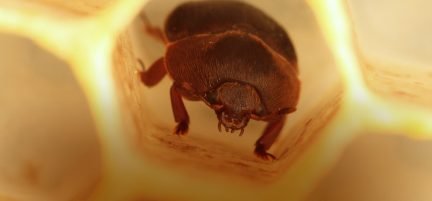
Small hive beetles have been in the United States since 1998, but they originate from sub-Saharan Africa. These beetles are found in almost all of the fifty states. The small hive beetle’s larvae feed on honey and pollen. The adult beetles destroy stored honey and the honeycombs.9
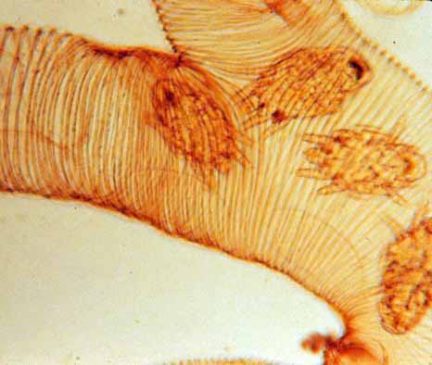
Tracheal mites are microscopic parasites that live in the windpipe of bees. To see these mites and determine the damage, a microscope is needed. If a colony of bees has been infected by tracheal mites, they will begin to die. The live bees will not cluster correctly, and the rest of the hive will die during the winter months.10
Honey is used as a natural sweetener for tea or baked goods and can also be found in medicinal products such as cough syrups or drops.
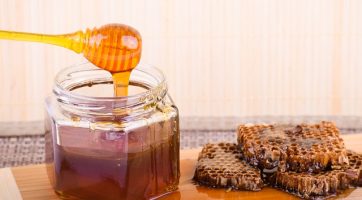
Raw honey is used to sweeten drinks such as hot or iced tea and baked goods like scones or pastries. Raw honey is often eaten by itself as a natural vitamin.
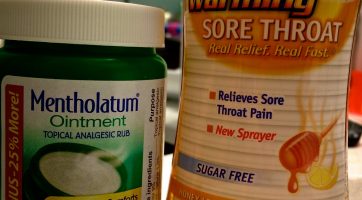
Honey is added to medication like cough syrups because it has natural soothing properties.
All of the bees in the hive including the queen bee, worker bees, drones, and larva.
To adapt a species to coexist and be beneficial to humans.
The only male bees in the hive, responsible for mating with the queen bee.
Laid by the queen bee. The first stage of a honey bee’s development.
The second stage of the honey bee’s development. A worm-like form before turning into a pupa.
Useful jaws that protect the bee’s mouth and allow the bee to chew, claw and scoop.
The transfer of pollen to a stigma, ovule, flower, or plant to allow fertilization.
The third and most important stage in the honey bees development when the wings, abdomen, internal organs and muscles form.
A milky jelly substance produced on the heads of the worker bees and fed to the queen bee in development.
Yellow pollen-carrying hairs along the underbelly of a bee’s abdomen.